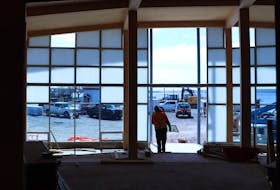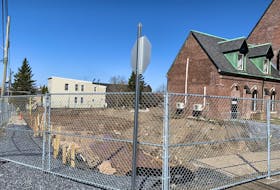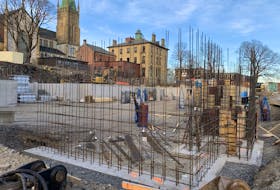They existed alongside Homo sapiens for thousands of years. Then, between 30,000 and 40,000 years ago, they vanished, eventually leaving our ancestors as the only human species on Earth.
The question of how the Neanderthals lived, how they interacted with our predecessors, and how bright the dividing line between our two species really was is one of the great mysteries of anthropology and archeology.
And it has implications for how we think about our place in the world today, says Janet Young, the curator of a new special exhibition simply titled “Neanderthal” at the Canadian Museum of History in Gatineau.
“I think what’s intriguing is the fact that they are one of those species that were very close to us in appearance, in the way that they functioned, and they died out. It’s the idea of: What caused that?” Young says.
“It’s more than just curiosity,” she says, adding that it’s important to know about the Neanderthals, to see “if there are parallels in our own world.”
Much of the Neanderthal exhibition looks to discuss “the whole concept of: Why did we keep going, and they died out?” Young says.
The exhibition opens May 17 and runs until January 26, 2020 and will boast a model of a Neanderthal living space, four original fossils (which Young says is a treat, since original fossils are rarely displayed), artwork depicting Neanderthals, and a recreation of an archeological dig. The exhibition was originally created by the Musée de l’Homme in Paris.
The installation is also designed to challenge stereotypes that have been built around Neanderthals since the 1800s, but which are now being re-examined in light of archeological and DNA evidence that shows the species was similar to us in many ways.
“You call someone a Neanderthal (and) there are all these connotations around it,” Young says. She wants people to come to the exhibition, “with an open mind” and without the social stereotypes that are embedded in our thinking on Neanderthals.
The whole study of Neanderthals is relatively new for humans, with the first related discoveries made in the early 1800s in Europe. Quickly, an interpretation formed that portrayed the species as literally sub-human and savage.
“I think in the world people are presented with facts but they just sort of take them in, but understanding where that information comes from and if there’s a bias in society, how that can weave its way into interpretation” is an important thing to understand, Young says.
Though there were dissenters from the “sub-human” narrative early on, it was really only in the 20th century when interpretations of archeology changed, and DNA analysis showed that there was likely significant interbreeding between Homo sapiens and Neanderthals. Nowadays, as much as four per cent of some people’s DNA can be traced to Neanderthals.
We don’t know why the Neanderthals disappeared. Many different theories abound, from environmental catastrophe brought on by volcanos, to a pandemic disease brought on by contact with humans, to a protracted war between Neanderthals and Homo sapiens in which the former were obliterated.
Then there’s the idea that Neanderthals were simply a subspecies of humans that eventually interbred and were absorbed into the Homo sapiens pool.
The exhibition hopes to look at the Neanderthals in “lots of different ways,” Young says — from the work that was done to discover them in the past, to how the Neanderthals themselves lived, to what we have learned about them (and us) through modern DNA technology.
The display also highlights the work of Canadian archeologist Henri-Marc Ami, whose work at the Combe-Capelle excavation site in France helped add to our knowledge of early human life.
Copyright Postmedia Network Inc., 2019








